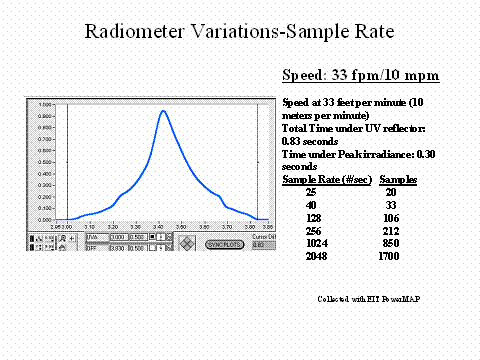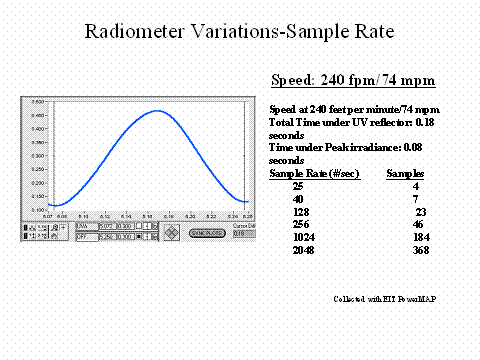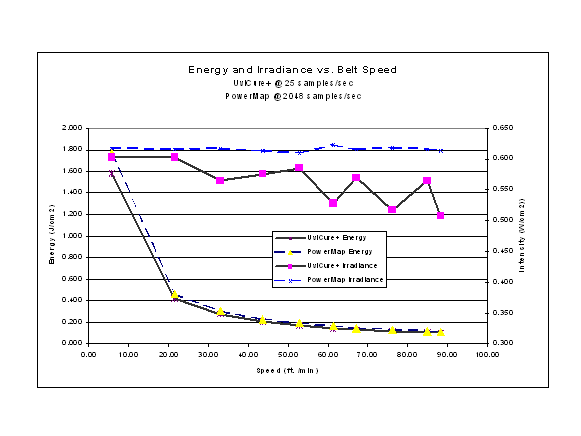Guide to UV Measurement
Data Collection Speeds
Many people mistakenly believe that their UV instrument has to collect data at the same speed as their production process in order to get useful results. When the production speed is relatively slow this is not a problem, but when production speeds increase, the instrument can be fooled. Imagine trying to predict the outcome of a national election by sampling only a few voters at one voting location. There would be times when the small sample pool correctly predicts the election outcome and there would be times when it was wrong. Increasing the number of voters sampled along with the number of voting locations would improve the odds of predicting the correct winner.
The relationship between line speed and the amount of UV (radiant energy density-Joules/cm²) reaching your substrate is inversely proportional. Doubling the line speed will cut in half the radiant energy density or dose. This inverse relationship between radiant energy density and belt speed allows UV measurements to be made at slower line speeds and extrapolated out if needed to faster production speeds.
The linear distance that a product travels through UV is relatively small compared to the total distance it may move on a production line. The total linear travel distance under a reflector from a single UV lamp system does not generally exceed 12-18”. Often times, it is much less, especially if the system is set-up as a focused system. On a highly focused UV system with an elliptical reflector, the most intense linear band of UV radiation is no more than an inch, maybe two in length.
For repeatable, reliable results, a UV Instrument needs to collect an adequate number of samples. Some production speeds have moved to the point where the instrument collects samples under the most intense peak one run but just misses the most intense point on the next run. This can lead to wide variations in the reported irradiance value for a system.
Sample rates in UV Instruments have increased with advances in electronics. Older instruments with slower sample rates have given way to a new generation of products that can sample up to 2048 times a second. Slower sampling instruments can still be used as long as you observe their ‘speed' limits. Check with the instrument manufacturer.


As belt speed increases, the irradiance values in the slower sampling (25/sec) UviCure Plus vary more than the irradiance values in the faster sampling (2048/sec) PowerMAP. Radiant energy values track well for both instruments. Results can also vary based on the system is set-up to run ‘in' or ‘out' of focus. For consistent results, do not exceed the speed limit of your instrument.
